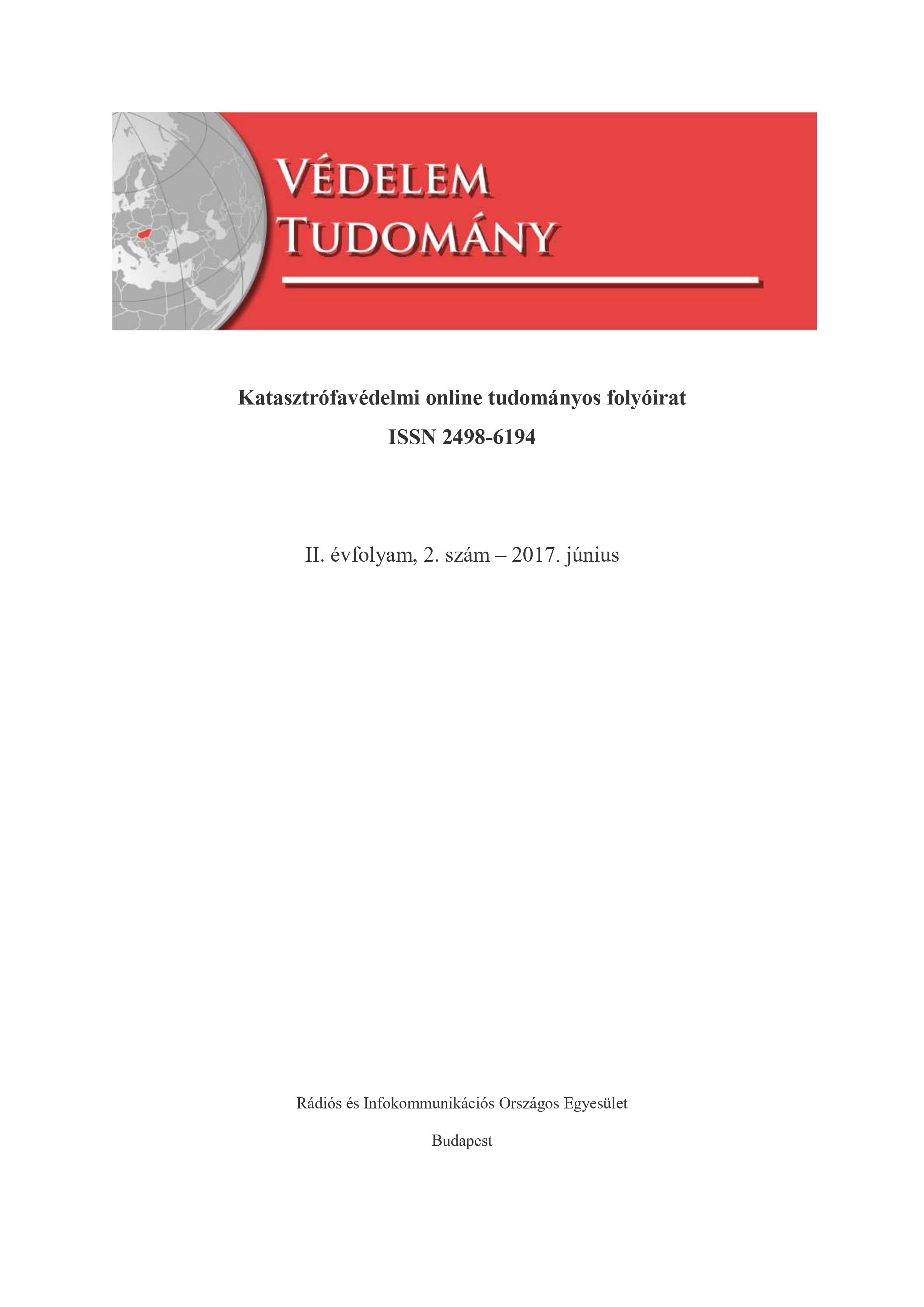Unmanned Aerial Vehicles In the Radiological Reconnaissance
Abstract
„What might happen, you should prepare to, what has never occured, it should be expected.” I think, this could be the key sentence of civil protection in the field of prevention. In our country we have to reckon with a number of disaster risk (e.g. flood, inland water, extreme weather), but I could mention the disaster at the nuclear vulnerability as one of the most serious hazards. I do this because our country outside the neighboring countries also have a number of nuclear facilities. It approximates the number of nuclear reactors 190 across Europe [1]. The possible occurrences of accidents ignore the national borders. At the prevention of disasters, in the defense against them, and in the occurence of remediation after they occur, the technical tools are becoming more involved. Such devices include the air vehicles which can be used in carrying out the tasks disaster widely, within the radiological detection of nuclear accidents.
References
Europe Nuclear Society: Nuclear power plants, world-wide. 2017. https://www.euronuclear.org/info/encyclopedia/n/nuclear-power-plant-europe.htm
Drónpilóták Országos Egyesülete: Mi az a drón, 2016. https://doe.hu/mi-az-adron
Halászné dr. Tóth A., Somosi V., Pongrácz G.:Esettanulmány a pilóta nélküli légijárművek jövőbeni alkalmazása tükrében. Repüléstudományi Közlemények, XXIV 2 (2012) 607-615. http://www.repulestudomany.hu/kulonszamok/2012_cikkek/49_Halaszne_Toth_ASomosi_V-Pongracz_G.pdf
P. Spanoudakis, „Market Overview of the Vertical Take-Off and Landing Vehicles.” http://citeseerx.ist.psu.edu/viewdoc/download?doi=10.1.1.144.4850&rep=rep1&type=pdf
Maziar Arjomandi, „“Classification of Unmanned Aerial Vehicles,” http://history.nasa.gov/monograph44.pdf (letöltés ideje: 2017.04.13)
Árvai László: Helyből felszálló pilóta nélküli repülőgép konstrukciók és jellegzetes megvalósításaik. Hadmérnök, VI. évfolyam, 1. szám, 201-210. oldal (2011) http://hadmernok.hu/2011_1_arvai.pdf (letöltés ideje: 2017.04.13)
Solymosi J, Baumler E, Nagy L Gy, Zagyvai P, Gresits I, Gujgiczer Á, Dorogi L, Takács M, Vajda N, Vodicska M: Eljárás és berendezés ismeretlen összetételű és/vagy több komponensű, főként hasadási termékekkel kontaminált terepszakaszok sugárszintjének légi felderítésére. Lajstromszám: 201 161. http://gammatech.hu/?lang=hun&mnuGrp=mnuAbout%7CmnuPublications&module=showpage&site=publications#link1 (letöltés ideje:2017.04.13)
Sugárzásmérő műszerek RABV sugárfelderítő rendszer UAV-ra. http://www.gammatech.hu
Zelenák J, Csurgai J, Halász L, Solymosi J, Vincze Á: A légi sugárfelderítés képességei alkalmazhatóságának vizsgálata elveszett vagy ellopott sugárforrások felkutatása, illetve szennyezett terepszakaszok felderítése során. Hadmérnök, IV. évfolyam, 1 szám, 46-62 oldal (2009). http://www.hadmernok.hu/2009_1_zelenak.pdf (letöltés ideje:2017.04.13)
Restás Ágoston: A pilóta nélküli repülőgépek alkalmazása az iparbiztonság területén. BOLYAI SZEMLE 24:(3) pp. 157-174. (2015)
IOM3, The Institute of Materials, Minerals and Mining: Beat of the drone – measuring radiation at disaster site, http://www.iom3.org/materials-worldmagazine/news/2014/feb/01/beat-drone-measuring radiation-disaster-sites
The Engineer: British drone set to help nuclear accident sites. http://www.theengineer.co.uk/aerospace/news/british-drone-set-to-help-nuclearaccidentsites/1018254.article
(A letöltések ideje: 2017. 04.14)




